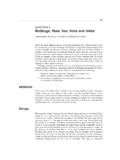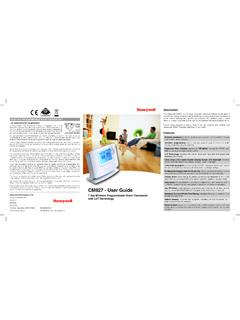Transcription of upanishads - Hindu Online
1 upanishads SRI AUROBINDO KAPALI SHASTRY INSTITUTE OF VEDIC CULTURE #63, 13th Main, 4th Block East, Jayanagar Bangalore 560 011 Phone: +91-80-26556315 Email: Web: upanishads SAKSIVC Page 2 of 111 TABLE OF CONTENT Introduction Anecdotes in upanishads Ten upanishads 108 upanishads Mahavakya or Great Sayings OM in upanishads Translations of Ishavasyopanishat Principles of Ishavasyopanishat The Knowledge of Brahman Exposition of Bliss Madhu Vidya or the Doctrine of Delight Vaishvanara or the Universal Divine Veda Quotations in upanishads Other Veda books Invocatory Peace Chants for the ten upanishads upanishads for Everyday Life References upanishads SAKSIVC Page 3 of 111 Introduction The upanishads have always been regarded in India as the crown of the Veda and as the end of the Veda as implied by the term vedanta.
2 The major upanishads are not separate books, but the last parts or the penultimate parts of the corresponding brahmana books. If the brahmana has an aranyaka attached to it, then the corresponding Upanishad is at the end of the aranyaka book. Shatapatha brahmana has no aranyaka; thus its last book or chapter contains the Upanishad, the famous Brhadaranyaka Upanishad. For details, see the section, other vedic books . The upanishads are not a revolutionary departure from the vedic mind and its temperament and fundamental ideas, but a continuation and development and to a certain extent an enlarging transformation in the sense of bringing out the into open expression all that was held covered in the symbolic vedic speech as a mystery and a secret , [1, Foundations, ].
3 The rishis of the upanishads sought to recover the lost or waning knowledge of the Veda by meditation and spiritual experience and they used the text of the ancient mantras as a prop and authority for their own intuitions and perception or else the vedic word was a seed of thought and vision by which they recovered old truths in new forms. What they found, they expressed in other terms more intelligible to the age in which they lived . As examples of the first method, we may mention the Chhandogya Upanishad ( ) or Brhadaranyaka Upanishad ( ) which state, as stated in the rik, the mantra of Rigveda . As an example of the second, we may mention the concept of brahman.
4 RV mentions repeatedly the Supreme One, or the One Truth, ekam sat, which underlines all existence. The upanishads developed this seed of thought into the magnificent conception of brahman. Chhandogya Upanishad ( ) declares that rig Veda can be understood only by meditation vijnanena. The extensive connection between the Veda Samhitas and upanishads mentioned in this essay should make a reader sceptical of statements such as, upanishads are a protest against the externality of vedic practices . The upanishads can be divided into roughly two categories for study. In the first are the metrical upanishads , relatively smaller in size, such as Isha, Katha, Mundaka, Shvetashvatara, Taittiriya, the middle two chapters of the non-metrical Brhadaranyaka Upanishad etc.
5 These upanishads use symbolism sparingly, so that one can get some idea of their contents by one's rational intellect. In the second group belong all other upanishads which are non-metrical and use symbolism extensively. Both Aitareya Upanishad ( ) and Brhadaranyaka Upanishad ( ) declare that, Gods love indirect reference or symbolism , paroksha priya hi devah. The purport is that the cosmic powers devah prefer that upanishads SAKSIVC Page 4 of 111 the profound truths be expressed only in a symbolic manner so that only the eager and persistent student can understand them. The Brhadaranyaka Upanishad begins with the detailed symbolism of the sacrificial horse, each one of whose limbs such as the face, belly, legs etc.
6 , corresponds to a specific cosmic power. For instance Usha, the dawn is the head of the sacrificial horse. The great commentator Shankara gives a brief explanation without clarifying the deeper meaning. The fifth and the sixth chapters of the Brhadaranyaka Upanishad have verses which for a gross mind appear to be ritualistic recipes for obtaining children of specific characteristics. The commentators practically ignore the fifth and sixth chapters, declaring that they are meant for the householders who deal with mundane matters. Persons who have attempted to pierce the symbolism in the Veda Samhitas can easily get clues to understanding the deeper meanings of these verses behind their apparently gross outward form.
7 The upanishads , besides delineating various spiritual experiences, also give a few hints on sadhana, , paths of spiritual realization. These methods of sadhana are called vidyas. The Upanishad does not give much detail about the vidyas because such details cannot be conveyed in print. Typically, a teacher transmits these truths to the students, often in silence. There are not many books in print which discuss the relevance of Upanishadic thought for spiritual practice. One such book is the Light on the upanishads by Sri T. V. Kapali Sastry [2, vol. 1] which discusses some of the secret vidyas in the upanishads and relates them to the corresponding ideas in RV.
8 These vidyas are identified either by the name of the teacher like Shandilya vidya, Bhrgu Varuni vidya or by their contents like the Bhuma vidya, Vaishvanara vidya, Madhu vidya, Prana vidya and so on. Vaishvanara means the divine force, which permeates every aspect of existence. This knowledge in the Chhandogya Upanishad is related to the similar idea in the RV contained in the ten hymns to the deity Vaishvanara. The Madhu vidya or the doctrine of the honey or bliss as the foundation of all existence, discussed in detail in Brhadaranyaka Upanishad ( ) is related to the corresponding mantras in the first book of Rigveda. Again the particular method of realisation described in the sixth book of Brhadaranyaka Upanishad ( ) involves the chanting of the famous gayatri hymn of RV ( ) and the madhu mantras in RV ( ).
9 This particular method is extolled in the Brhadaranyaka Upanishad ( ) stating, if any one sprinkles it on a dry stump, branches would grow and leaves spring forth . We will mention two of the vidyas in some detail since they connect the Veda Samhita and Upanishad, namely Madhu Vidya and Vaishvanara Vidya in later sections. upanishads SAKSIVC Page 5 of 111 Anecdotes in upanishads Krshna, Son of Devaki Satyakama Jabala and the Vedic Society The heavenly word da and its three meanings Chakrayana Ushasti and apat dharma The Sage Raikva, the Yoked One Krshna, Son of Devaki The Chandogya Upanishad gives a special teaching in the sections ( ). The section ( ) states: Ghora Angiras expounded this well-known doctrine to Devaki's son Krshna and said; such a knower should, at the time of death, repeat this triad: akshitamasi You are imperishable achyutamasi You are unchangeable pranasamshitamasi You are the subtle essence of Prana (On hearing the above) he (Krshna) became tireless apipasa.
10 Then the Upanishad quotes two verses from the Rigveda Samhita namely ( ) and ( ), the famous mantra to the supreme God, the Divine Sun Surya. Here is the earliest mention of Sri Krshna. As Sri Aurobindo states, it speaks of Krshna, son of Devaki, in a tone that would justify us in assuming that it regarded them not as ancient and far off names but as men who had walked on earth in living memory." Satyakama Jabala and the Vedic Society The story of Satyakama is one of the most typical in the Upanishad. It is full of sidelights on early Vedantic teaching, Yogic sadhana and that deep psychical upanishads SAKSIVC Page 6 of 111 knowledge which the writer took for granted in the hearers of his work.
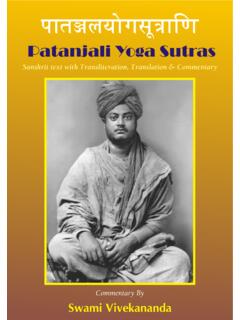
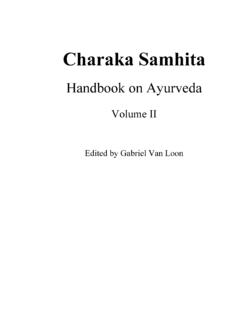
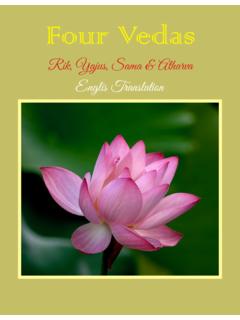






![Reverse Charge Construction - [Reverse Charge Construction]](/cache/preview/e/d/7/6/3/8/e/1/thumb-ed7638e1f045ef82e3f46a5c2955b112.jpg)

